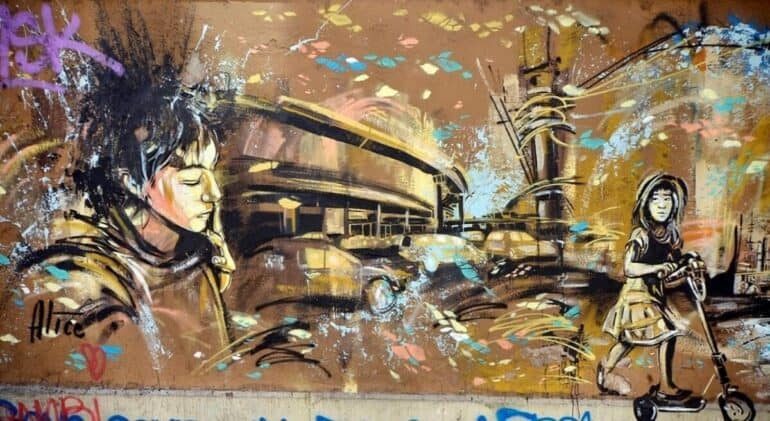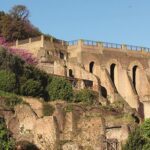Where to Find the Best Street Art in Rome
Many people flock to the Eternal City to catch a glimpse of a Caravaggio painting or the architectural masterpieces of Borromini, but did you know that the city of Rome is one of the most interesting destinations for street art? Many unique pieces and graffiti by a variety of independent artists color the streets of Rome, proving that art never remains static for long.
The range of work in the city is ever growing, from established works that have been in the city for many years, to new works that seem to materialize overnight. The streets and walls of Rome have become an informal gallery for the works of many Italian artists as well as international masters of this contemporary form of expression.
3-hour street art tour of Rome on the back of a Vespa
With our Street Art Vespa Tour of Rome you can enjoy a day of your holiday discovering the unconventional side of Rome in a cool way. Get your camera ready for the most unconventional Rome you would ever imagine!
You can wander the different neighborhoods of Rome on your own, but for those seeking a more curated experience, there is a mobile app developed in 2015 by Artribune in partnership with Toyota available for free. The app provides a map of pinpointed locations in Rome where you can find various works, as well as a guided tour in English and Italian that will guide you through this “open-air” collection of art.
Street Art in San Lorenzo
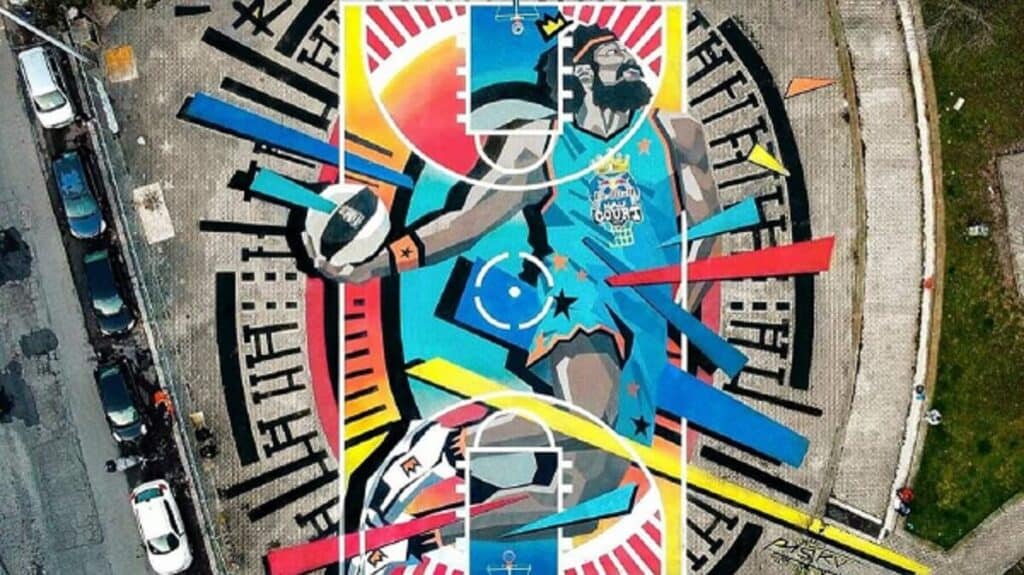
Recognized as one of Rome’s art districts, San Lorenzo is home to students and street art; from Via dei Volsci to Via degli Enotri and a collective wall through Via degli Ausoni, there is much to be seen. Embrace the spirit of basketball on Via Dello Scalo di San Lorenzo with Francesco Persichella (PIVSK)’s pop-art style depiction of a basketball player leaping victoriously towards an invisible goal. The piece sits atop a basketball court that was in disuse until Persichella and the Red Bull Half Court teamed up to restore its spirit.
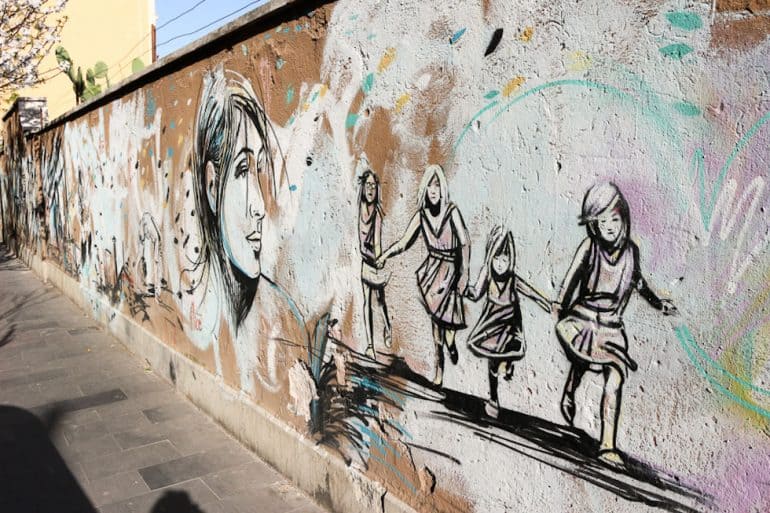
San Lorenzo is also home to a block-long mural by international artist Alice Pasquini on Via dei Sabelli: a colorfully vibrant mural celebrates womanhood and carries strong feminist themes. Most of Alice’s works depict strong independent women, so keep an eye out for her artwork on the streets.
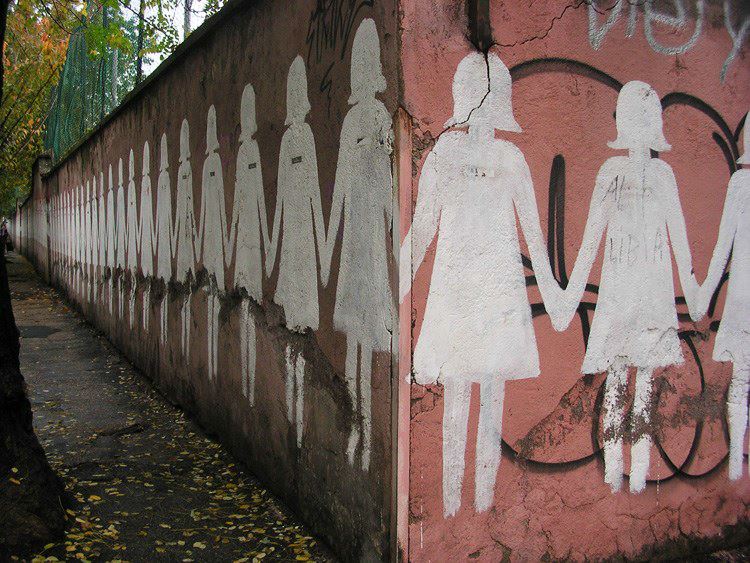
On Via dei Sardi Elisa Caracciolo’s mural showing paper cut women denounces femicide through placing the names of women who were victims of violence and abuse by men.
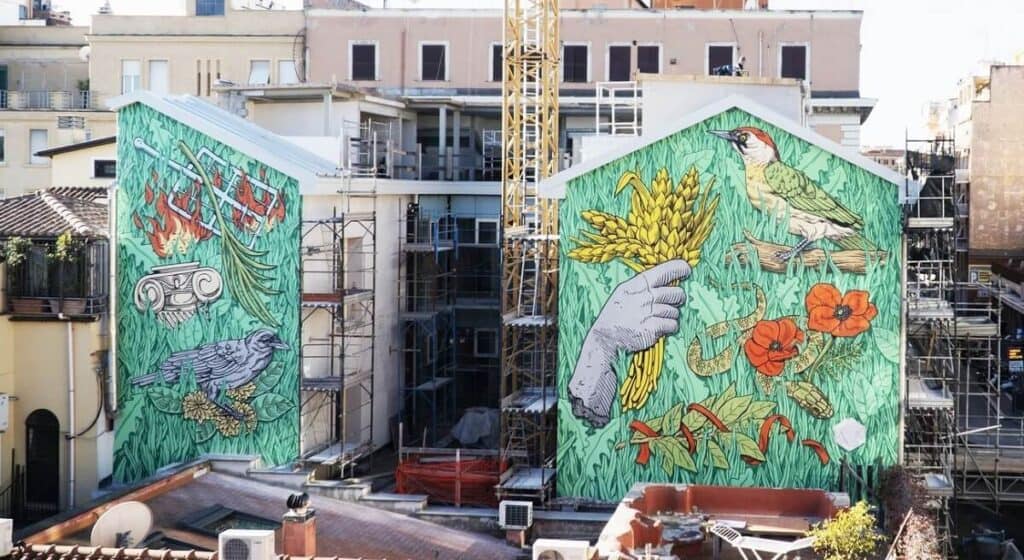
Between Via dei Reti and Via dei Piceni, Lucamaleonte’s Patrimonio Indigeno remembers the bombings of San Lorenzo during WWII. The piece is a collection of mementos which include poppies, in memorial of those who fell in the war, a laurel and snake, symbolizing Goddess Minerva and Sapienza University which was Rome’s first university, and the hand of Goddess Ceres.
San Lorenzo is also home to works by Leonardo Crudi (don’t miss his beaituful ground murales in Piazza dell’Immacolata), Christian Guémy, SOLO, Unga, as well as other Italian and international artists. The playful nature of San Lorenzo has made it into a fertile ground for Roman artists to constantly use its walls as their ever-changing canvas.
Street art in Pigneto
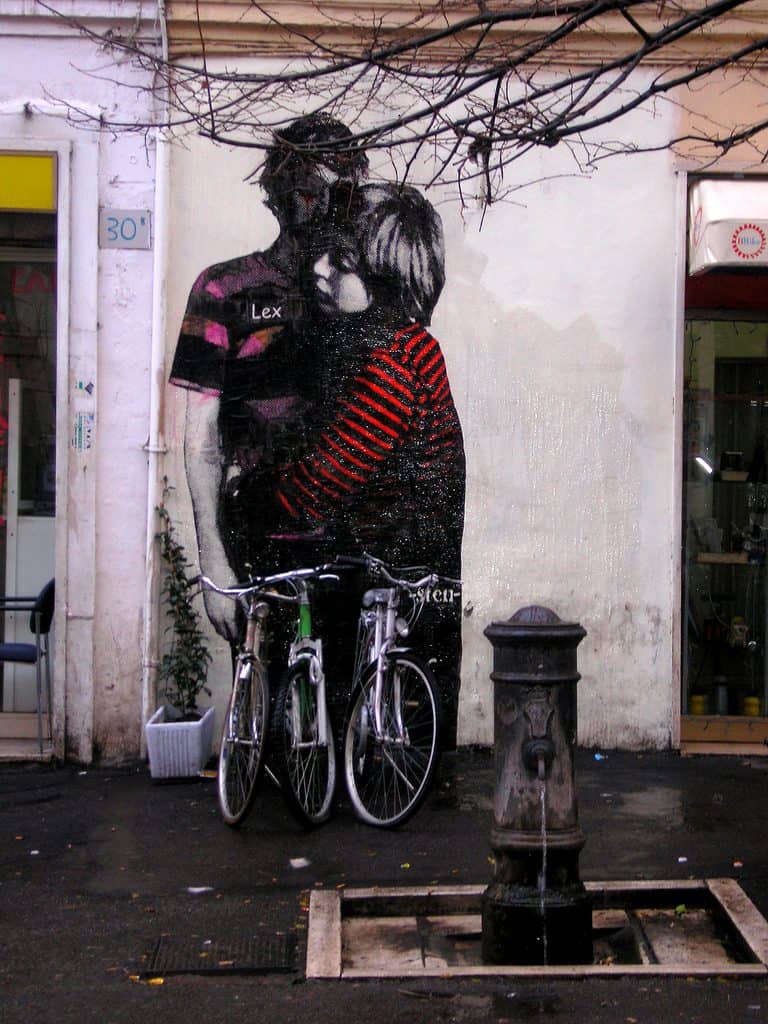
Pigneto, once a predominantly industrial area, is a mecca of street art. Street artists whose work can be found here are: Hogre, Hopnn, Alt Novesette aka Alt97, Uno, and #cancelletto#. Pigneto is sometimes referred to as the “home of stencil” because of its famous painting of a couple in a tender embrace by Sten & Lex who are considered the pioneers of stencil graffiti due to their discovery of half-shade technique. They have been creating work using this method since 2000 in the streets of Rome, London, Paris, Barcelona, and New York.
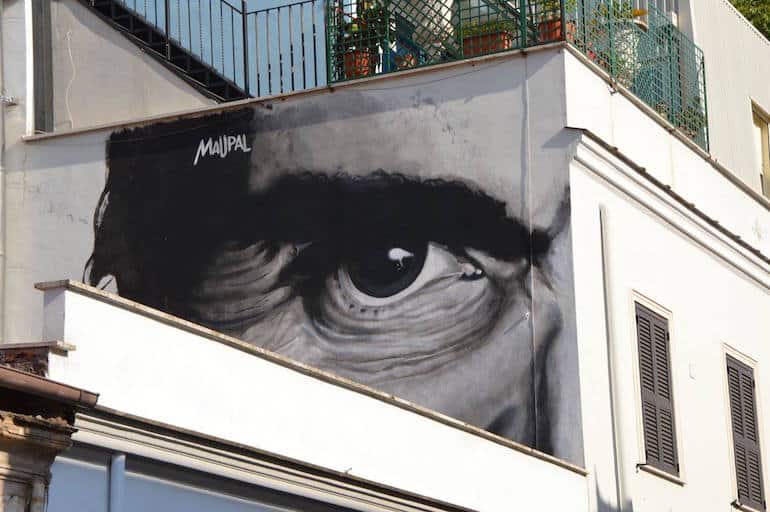
There are a lot of works linked to literature and cinema, such as artist Maupal’s black-and-white depiction of Pier Paolo Pasolini’s piercing gaze on Via Fanfulla da Lodi or Mirko Montano‘s “Non Illuderti” on Via del Pigneto.
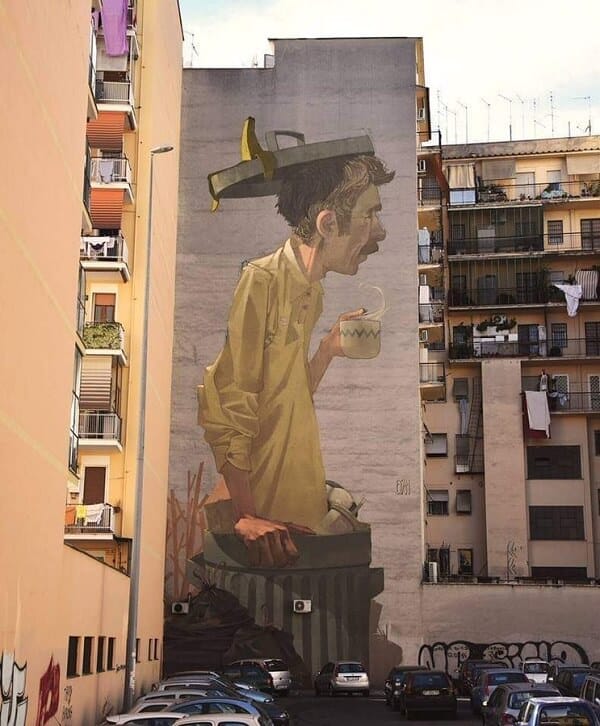
Between Pigneto and Tor Pignattara, you can find the tallest street mural in Rome, towering above the neighborhood and 32 meters. Coffee Break by artist Etam Cru depicts a man drinking a cup of coffee while standing inside a garbage can.
Street art in Ostiense
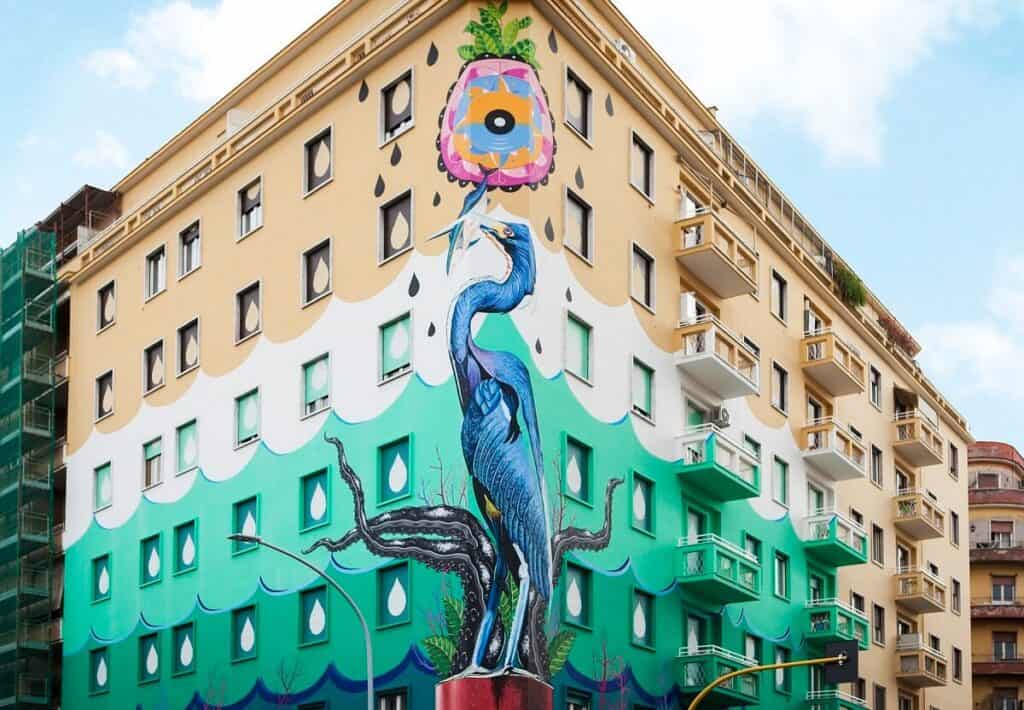
Street art in Ostiense has been legalized and therefore the walls of this zone are covered by astonishing pieces not to be missed. It holds more than thirty large pieces of street art and has successfully embedded itself as part of Rome’s cultural heritage.
It is home to Europe’s largest ecomural, Hunting Pollution by Federico Massa (known as Iena Cruz). A blue cormorant bird holds a fish in its mouth, stretching from the base to the top of its seven-story home. The piece was created with sustainable paints capable of capturing atmospheric pollutant dust and neutralizing them into less harmful salts.
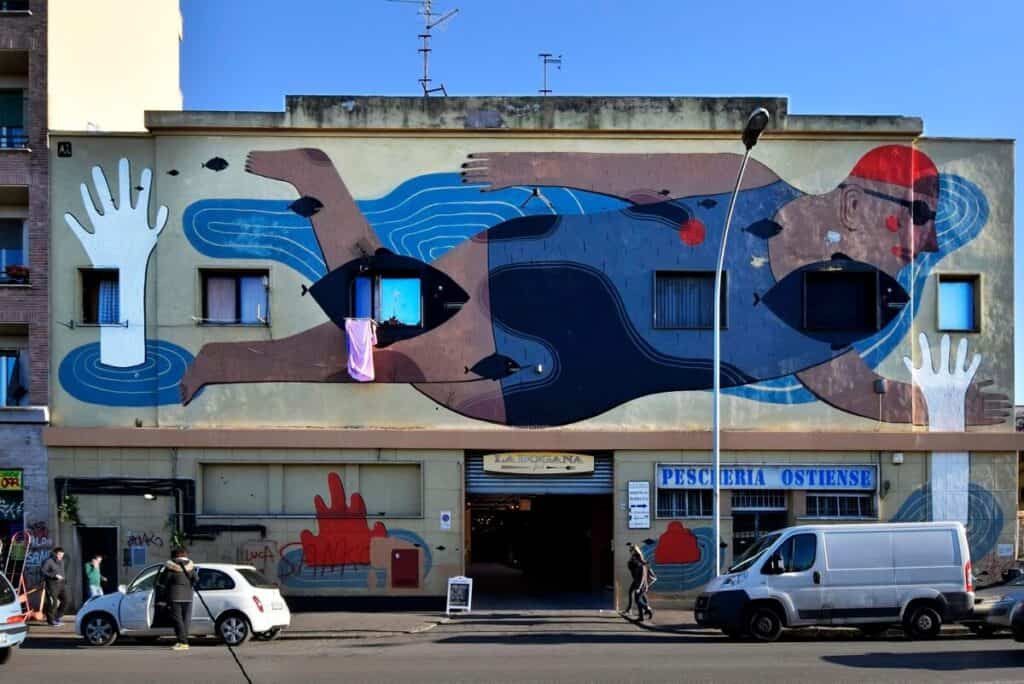
Nature-inspired imagery continues on the face of the Pescheria Ostiense, with Agostino Iacurci’s Swimmer floating ironically above the door of this large seafood market.
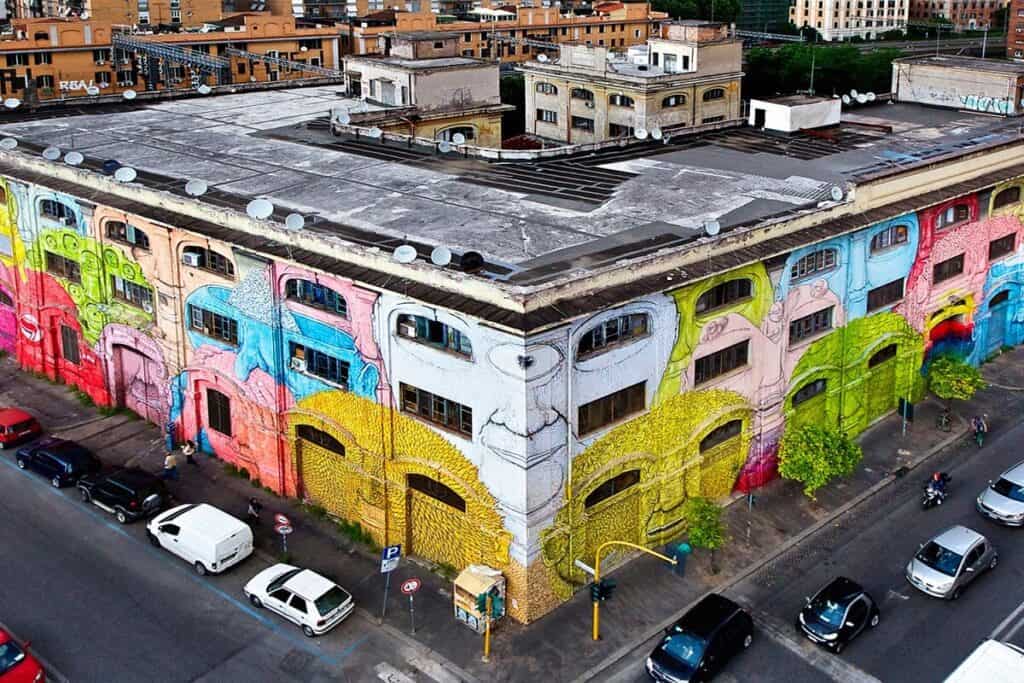
Next, you can gaze up at artist Blu’s prominent mural which wraps around Alexis Social Center, a former military warehouse which has been occupied since 2004. 27 brightly colored faces tell a different story of injustice and inequality, and the project was funded entirely by the 450 residents of the building.

Be sure to look out for Roa’s immense Jumping Wolf on Via Galvani. This large creature stretches from bottom to top of an orange building, baring its teeth at those who pass by. In Ostiense you can also see works by Blu, Sten & Lex, Ozmo, C215, JB Rock, Kid Acne, Gaia, Borondo, Hitnes, and Lucamaleonte, among others.
Street art in Garbatella and San Paolo
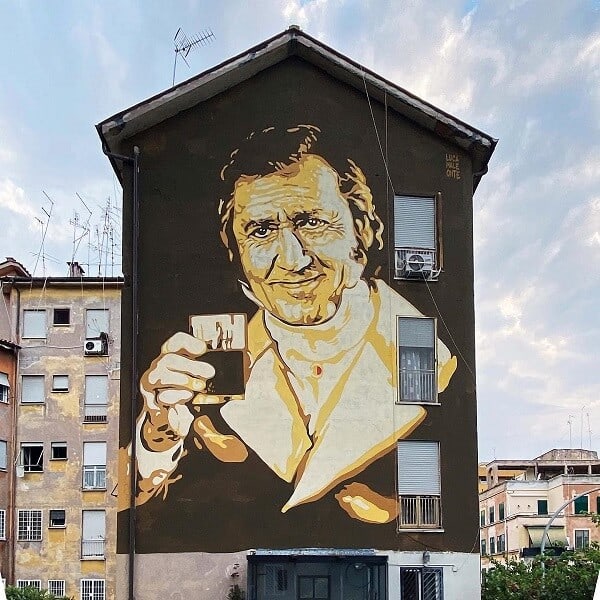
For many, Garbatella is considered to be the true heart of Rome. A working-class neighborhood, Garbatella is home to many pieces of street art that have appeared in recent years. One of these pieces is the portrait of Italian actor Alberto Sordi as he appeared in “Marchese del Grillo.” This piece, by Lucamaleonte, is located on Via Persico and is not to be missed.
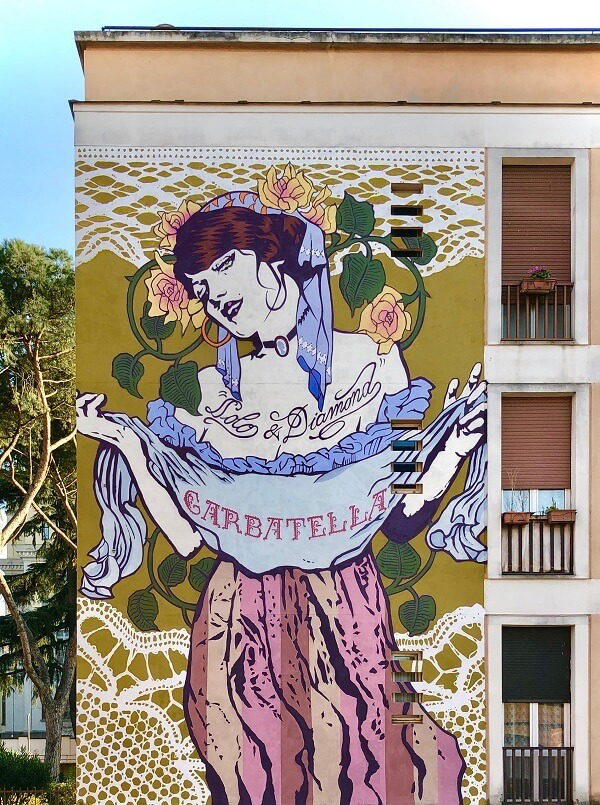
Next, you can see Oh My Darling Clementine, an Art Nouveau-style piece born through the collaboration between artists Diamond and Solo, located in Piazza Sauli. In the San Paolo area, you can find graffiti by artists Greg Jager, Leonardo Crudi, and Elia Novecento.
INSPIRATION
Sculpting The Forgotten: The Sculptor That Gives Life To Lonely Tree Trunks
Street art in Quadraro
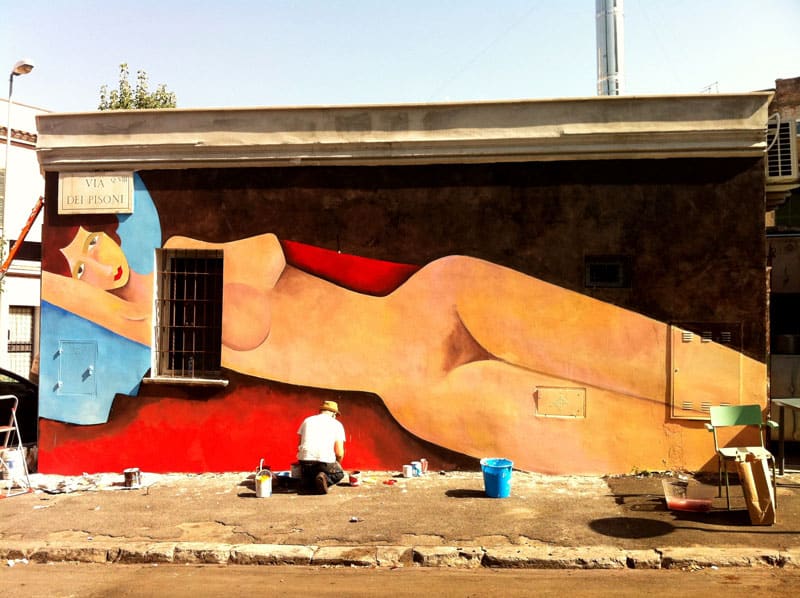
The Quadraro neighborhood has attracted visitors in recent years thanks to MURO (muromuseum.blogspot.com), a free open-air street art museum. You can start your walking tour on Via dei Lentuli to see David “Diavù” Vecchiato’s vibrant and eccentric Art Pollinates Quadraro.
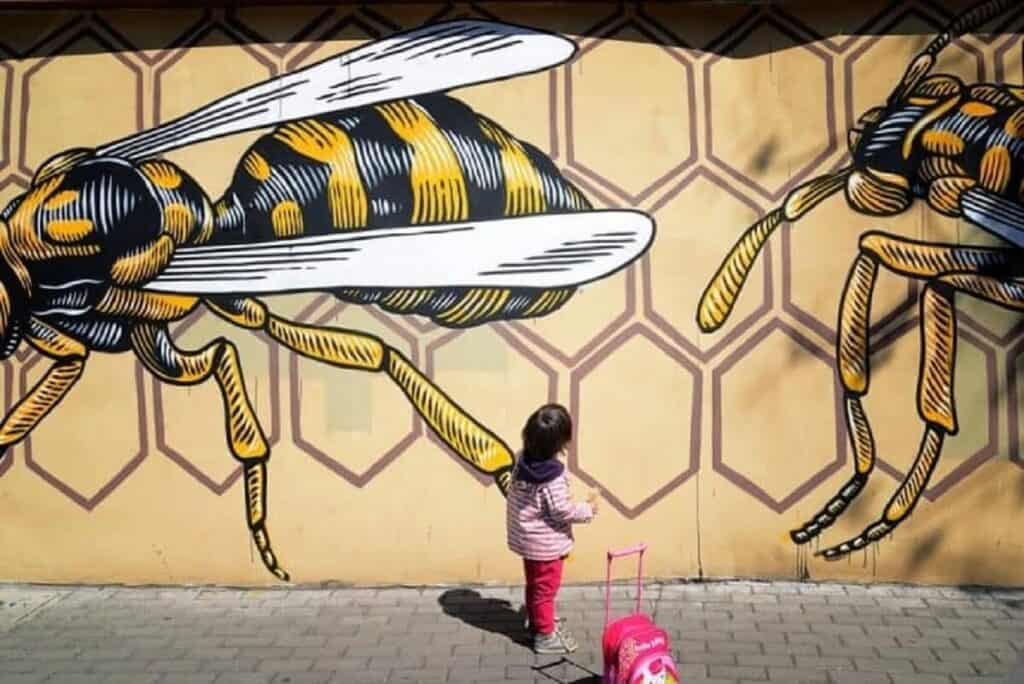
Continue walking to spot Lucamaleonte’s Nido di Vespe. This piece memorializes the nickname given to Quadraro by Nazis due to the neighborhood’s opposition to fascism and the German blitz of 1944.
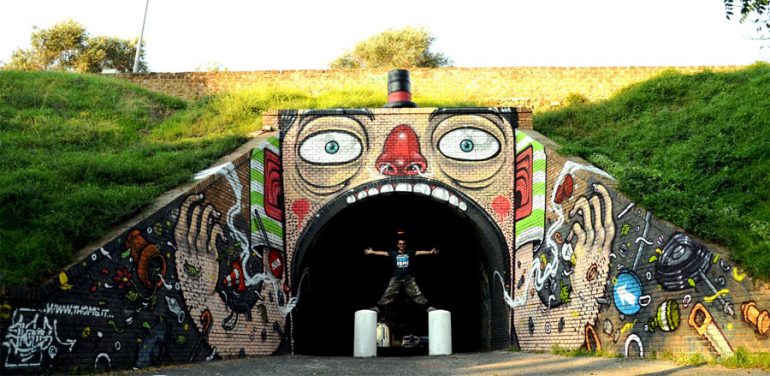
One of the few works by a female artist, Gio Pistone, is painted over the entrance of a tunnel in this district. A monster guards the entrance, separating Quadraro from the adjoining district. The tunnel’s exit was painted by Mr.Thoms, and depicts a gigantic mouth sucking in everything around it. There is a larger corner wall depicting a female figure by Jim Avignon, Berlin and New York based street artist.
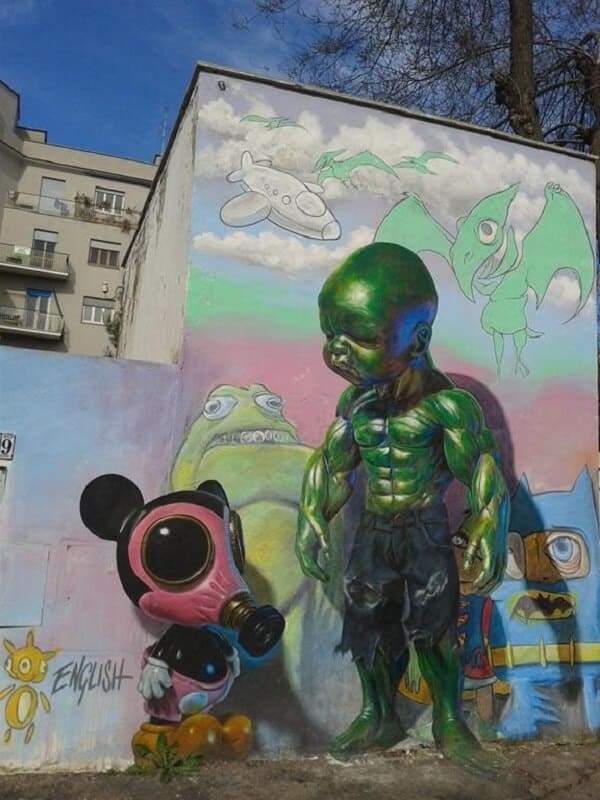
At the end of the tour, you can make your way to the most famous piece in MURO: Ron English’s Temper Tot/Baby Hulk. The Hulk-like child and gas-masked Mickey Mouse provoke conversation about the corrupting influence of American pop culture in today’s world. If you are interested in learning more, a guided tour is available in English for 10 euros with MURO.
Street art in Tor Marancia
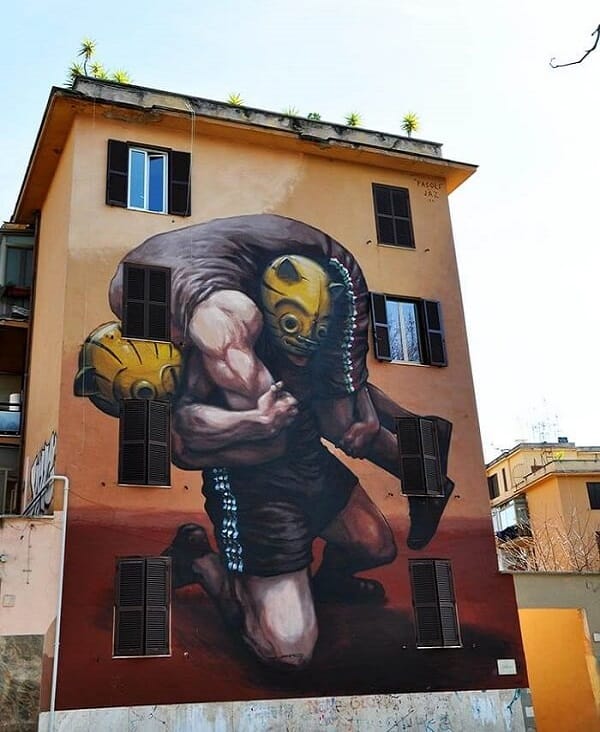
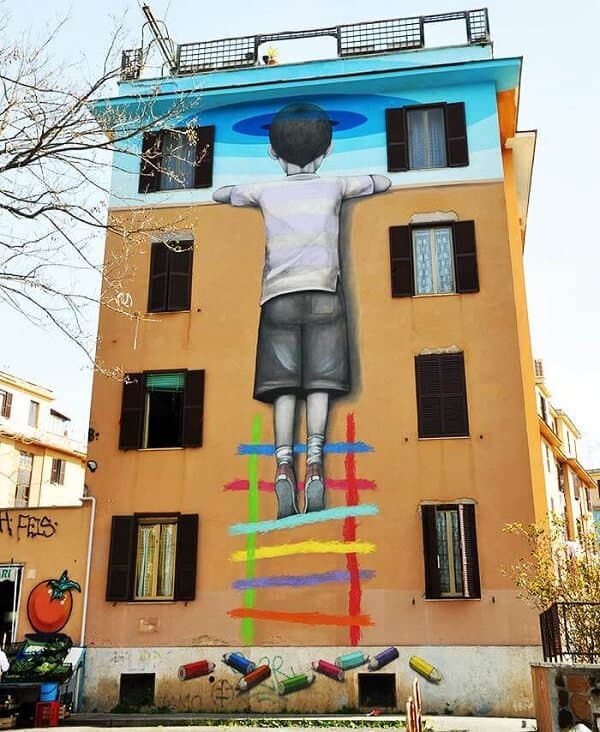
Another up-and-coming neighborhood for street art is Tor Marancia, a popular neighborhood home to the working class and the last to be transformed in 2015 by 20 international artists from 10 countries. 22 murals were created over the course of 70 days, thanks to a project conceived by 999Contemporary.

The murals are 14 meters in length with a surface area of 155 square meters each. Diamond, Mr. Kleva and Moneyless, Seth and Philip Baudelocque, and Jaz are some of the street artists who participated in this venture. Surreal animals, giant monsters, faces and superheroes line the streets in a riot of colors, each telling their own story. These pieces have transformed the walls of Tor Marancia’s public housing to yet another open air museum, creating an exhibition accessible to all.
INSPIRATION
Contemporary Art Galleries in Rome


